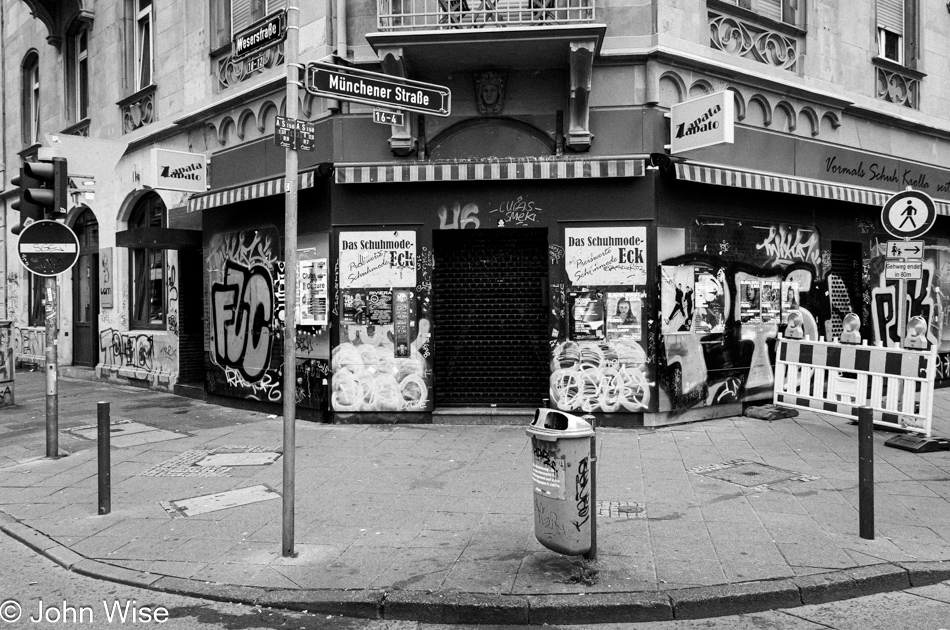
In color or ohne Farbe, the world at the edge of my recollections is simultaneously vibrant, cold, devoid of sympathy, and ready to penetrate dreams. Places out of the past flirt with the wake of interpretation as I skirt time out of sync with the moment, leading me to wander the thoughts and impressions of an age ago. Somewhere in my distant history, I traveled the cascade of depravity I yearned to embrace when the only salve for pain was witnessing decay greater than the suffering of uncertainty. A heart in putrefaction is ripe to take wrong turns as my existence was spinning around a drain too backed up to accept the shit trying to find an escape. To be enchanted with filth as a reflection of where one’s soul slunk off to seemed to be an appropriate cloak of how to be perceived, should one desire to be held in disdain.

Finding the transgressive self that is never far away (and yet it is) as distance washes the unclean from our being when we fail to remain ensconced below the surface is to re-encounter an iteration of that version of yourself that might better remain buried with progress. The borders in youth were fluid in generally unhealthy ways, with survival never seeming certain. Existential nihilism fit tightly as though it were a second skin while all that embellished the darkness was clung to, should it try to escape the clutching hand.

Cast off what has no utility, burn it, break it, throw it into the void. These scooters likely elicit more curiosity about why they are strewn about than the human detritus that is and has been part of the Bahnhofsviertel for decades. Those wretched former human beings that straggle along the passages and dirty streets of our cities are relegated to be the denizens of the void, barely existing in an abyss of disdain. The first lesson in the Lack-of-Empathy Club is to call it compassion in order to mask the hatred of such eyesores daring to pollute our vision and sense of aesthetic sensibilities.
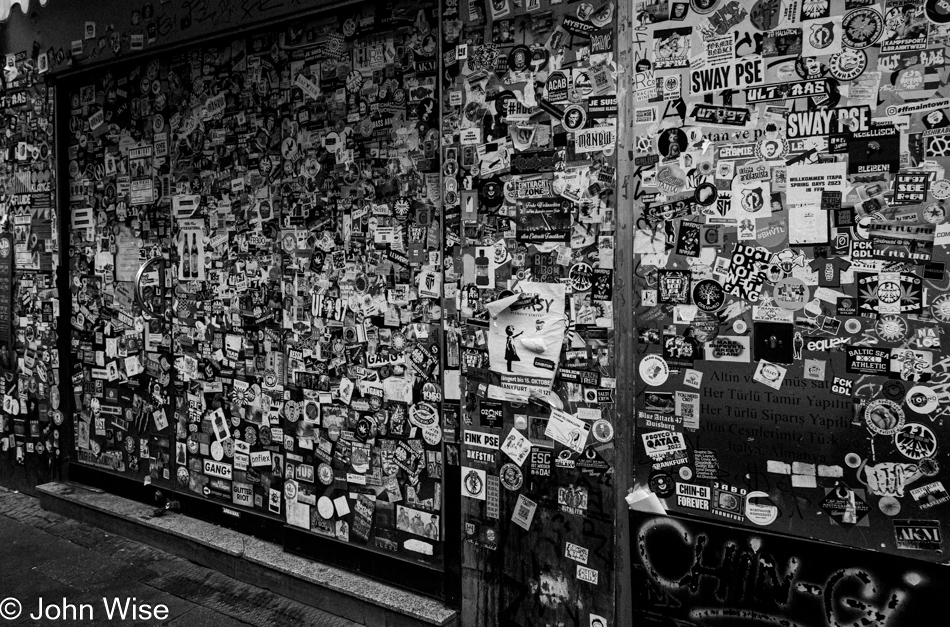
Allein (alone), nicht allein (not alone) should never be the transitional state of emergence as it damages the metamorphosis of the inevitable leaving of innocence.
With Caroline visiting her godmother Helga, I’m alone and then again, not alone, as no matter the distance, Caroline is never far. Normally, I’d be sharing details at some point in a post regarding what my other half has been up to, but Helga has never been a fan of photos. In any case, so as not to create undue stress, the visit with Caroline’s godmother is happening away from the lens. Should there be a story about their shared time, that will be coming from my wife and inserted into this post where she sees fit.

From the fentanyl addicted to African nuns, the poor to those of means, old to young, people from all walks of life move through the main train station. Other than beggars and station employees, a certain amount of hurry is in most people’s step. I’m certain that it’s only the pigeons that are the constant here, while everything else has changed since I first visited this station 38 years ago. They and the building never appear different. Just as it was on my first visit, the homeless see something in me that inspires them to ask me for help. I’ve watched who they target: they have methods best known to themselves that inevitably include me. But it’s no longer 1985, and the luxury of lingering for hours on end for serious people-watching is no longer afforded me. I have a date I must honor.
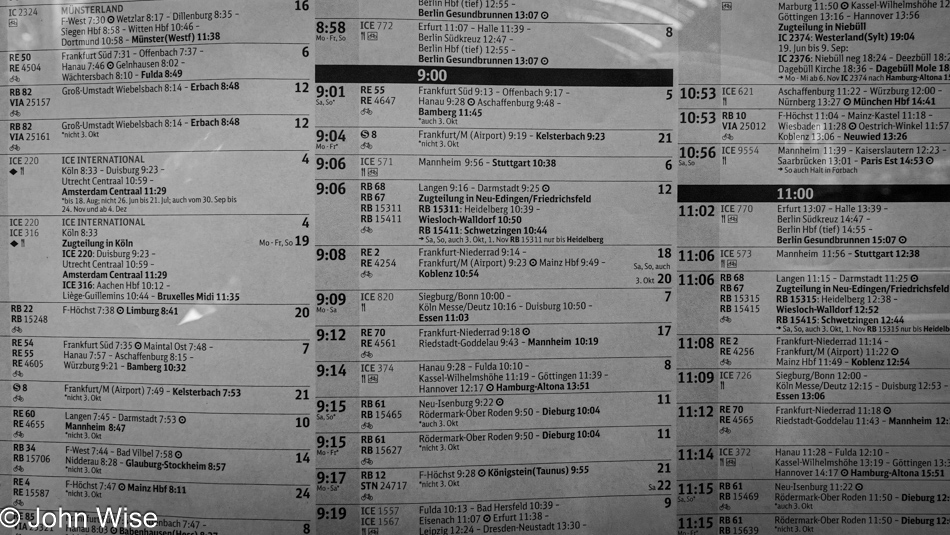
If you knew the main station area, a.k.a. the Bahnhofsviertel, you might think my date was with a prostitute. Like I said, it’s no longer 1985. I’m also not looking for a train to travel to any particular destination as I’m already within proximity of where I need to be. I’m here to revisit that distant part of me that, while awkward or alien to what others might consider normal, was a defining age of understanding what love was and wasn’t.

Foundations responsible for bearing the weight of everything above them can, over time, appear scuffed, but they are the only reason anything has the opportunity to remain standing well into the future. We do not undermine these less-than-sexy structures; instead, we build bulwarks upon them to offer resilience to the work they must perform. This is also a metaphor for us humans who, far too often, are fragile entities built of paper mache on balsa wood. Resilience among people may arise out of difficulty and struggle but a more humane architecture is one premised on love but how many of us have acquired that as our foundation?
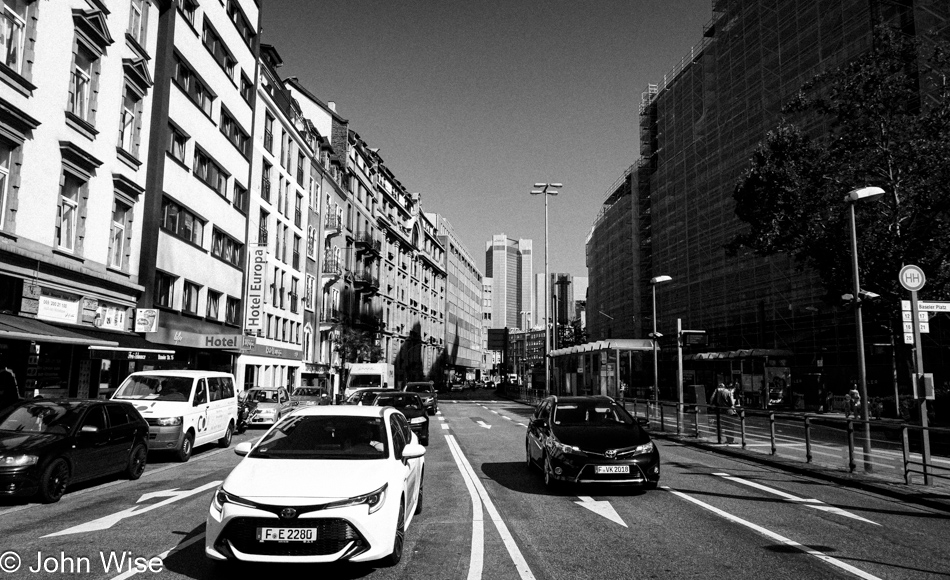
Baseler Platz, south of the Hauptbahnhof. I’m heading towards the Main River, but looking north offers you nothing other than coordinates of abstractions that cannot be experientially understood. Most of what education brings seems to me to be similar in its abstraction in that without putting yourself in the middle of a thing; there is nothing tangibly processed or owned. Maybe a good example would be that of learning a language that you memorize for reading, but you’ve never uttered a single word of it, so there is no real fluency. We must find familiarity by immersing ourselves and yet we are asking young minds to shutter imagination by replacing it with rote memorization.
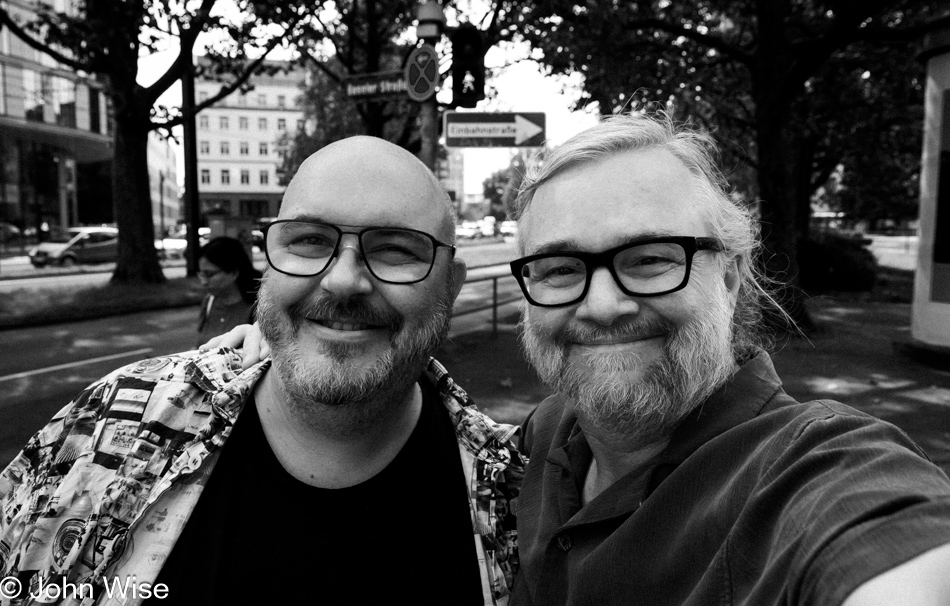
My lunch date is with Olaf Finkbeiner, whom I’ve known for about 35 years now.
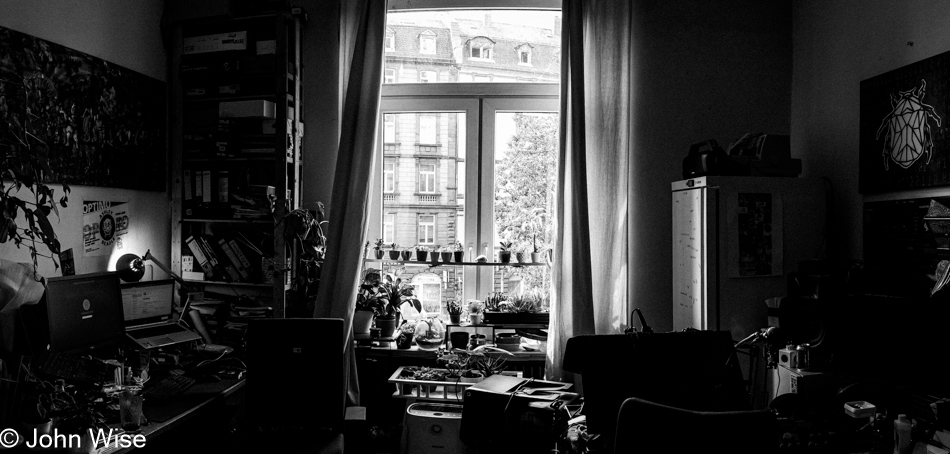
Across the street from his flat is a little Persian place where we’ll eat and talk for a couple of hours before he is pulled away by a work-related phone call he must tend to. Prior to that call, we’ll discuss social issues, the global economy, education, technology, and politics, along with change and the lack of it. Between sirens and speeding emergency vehicles, we’ll also touch on creative endeavors and Olaf’s building of a small stage area in his basement, where he’ll be moving some musical equipment with the hopes of it becoming a studio space for making music and videos.

Contrary to my thinking I was going to return to my wander, Olaf invited me to take a pause in the rear garden and that we could continue the exchange once he was free again. My first inclination after pulling up to a picnic table was to get in some reading, but after laying down on the bench to look up into the tree towering over me, I started to consider how a tree might see itself.
Leaves attach to twigs and branches via the petiole. The leaves are in a kind of universe to themselves as the trunk and roots are some distant concept that would be unfathomable though the relationship between the parts cannot exist without the symbiotic whole. To the branches, is the trunk a type of God, and the leaves their children? Root hairs only exist by the grace of lateral roots, while the tap root is the kingmaker in this subterranean world. The minerals and water taken up by the roots are like prayers that allow the molecules to ascend the trunk to what must surely be heaven.
Does the leaf surface find its life force from the sun, the CO2, or the water that mysteriously arrives from a deep, hidden place? What about the glucose produced by the leaves that travel out of them and is stored as starch by the tree? Where is the creation story found in this relationship?
To the many creatures and processes on earth that require oxygen, if they knew that their existence was only possible due to the byproduct of photosynthesis, would they pray to plants and cyanobacteria? The symbiosis of these threads could go on and on, and they do, except in the simple minds of people who believe that they are somehow removed from this important relationship; they are above the life that is all around and within them.
Without the plants, we all die, not by a 2nd coming but by negligence exponentiated by our own stupidity or by our ability to blame our shortsightedness upon our deities.
Without us accepting our roles of acting like trees to connect the earth to the sky and utilizing what’s between, it will be us humans who will prove we were undeserving of such a perfect place. Isn’t that then our flaunting of vulgar stupidity and hatred for the very place essential for our survival as we pretend to be smarter than trees?
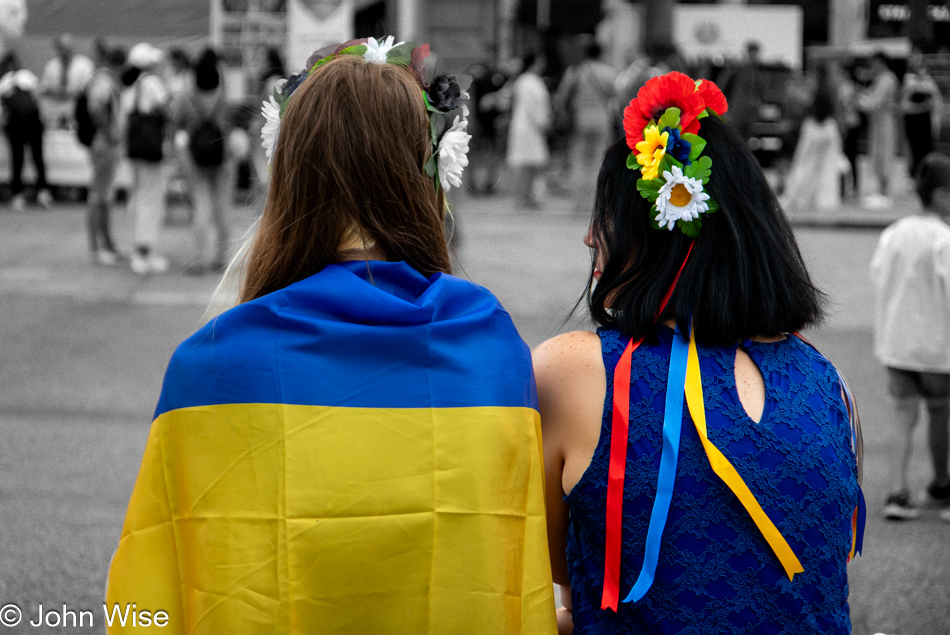
After leaving Olaf and my thoughts of God found in botany, my path took me upriver to Römer for a quick visit with Jutta before taking a walk to Hauptwache for my dinner date. As I sat on a nearby wall, wondering if my wife would find me in the crowd as I’d not told her exactly where I was, I realized that something out of the ordinary was going on, and I hadn’t realized it because it was part of what is simply normal in Frankfurt. A demonstration in support of Ukraine was taking place. There are over 1,000,000 Ukrainian refugees here in Germany, or ten times the number the United States has accepted. What was happening was not so much a demonstration but community outreach for the Ukrainians to show appreciation for being welcomed by a tiny country about the same size as the state of Montana. It’s strange to consider that the war is only about 1,000 miles away from Frankfurt, which is about the same distance as Phoenix, Arizona, to Portland, Oregon.
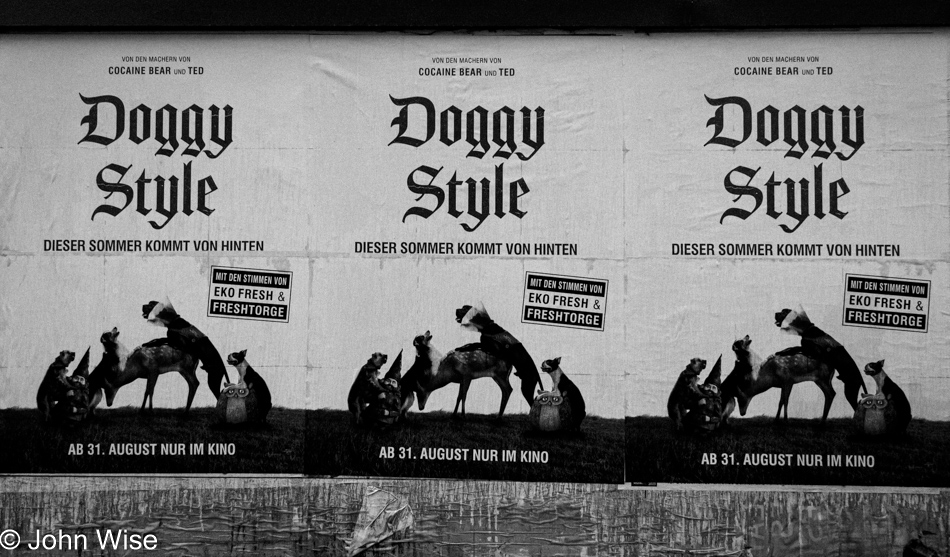
My date found me and suggested Döner for dinner: a woman after my own heart. Having just visited Nazar Döner & Grill yesterday and finding it acceptable for this kind of encounter, we strolled along Zeil just as we have countless other times, as this is obviously not our first date. Speaking of dating, it took me a moment to learn that this film poster for the movie Doggy Style and its byline “This Summer Comes from Behind” and whatever that implies is an animated film known as Strays in the U.S. The provocative poster with a dog about to mount a deer while another dog has mounted a gnome suggests themes that appeal to my prurient interests, though I’d never have thoughts about doggy style with Caroline and of course, I mean seeing the movie. A date in Frankfurt with Caroline wouldn’t have been complete without a visit to Eis Christina for their legendary Spaghetti Eis, which is as popular as ever.

What an awkward transition from innuendo about sex from behind to Jews that took flight to escape Nazi Germany back in 1939, but this is the absurdity of our world. My post has moved through inferences about my time with prostitutes, homeless people, and nihilism to friends, family, war, entertainment, atrocities, nature, love, God, education, and even a nod to a pop song in my title because a life well lived will likely have been a stroll through the surreal and should never be experienced alone.
[So, how was my day? I didn’t want to interrupt John’s flow, so here is a quick summary: Helga picked me up from my sister’s house. Since she had a stroke and major surgery last year, I was a bit surprised that she’s still driving. However, since Helga lives in Kronberg, the ability to drive is extremely important for her need to connect with cultural amenities here in town. I had asked her to suggest a museum or exhibit for our outing, and so we headed to a parking garage near Schauspielhaus, which allowed us to walk over to the Mainufer (Main riverbank), where most of Frankfurt’s museums are located. En route, we passed the (new to me) Jewish museum that definitely warrants a thorough visit in the future, but today’s destination was Liebieghaus, a former villa that now is a sculpture museum and gallery. We crossed the river on the Holbeinsteg bridge, a relatively new pedestrian and bike/scooter river crossing. At this point, it was time for lunch which we enjoyed in the restaurant of the Staedel Museum. Afterward, we walked over to Liebieghaus next door and its current exhibit, “Machine Room of the Gods,” which links sculptures and art with science, shining modern light on ancient artifacts. Since the day was hot and humid, we sat down for coffee and water in the museum’s cool garden cafe. I really enjoy these outings with Helga; she is so culturally minded. Her perspectives are always interesting, and I love our conversations; she challenges and inspires me. – Caroline]